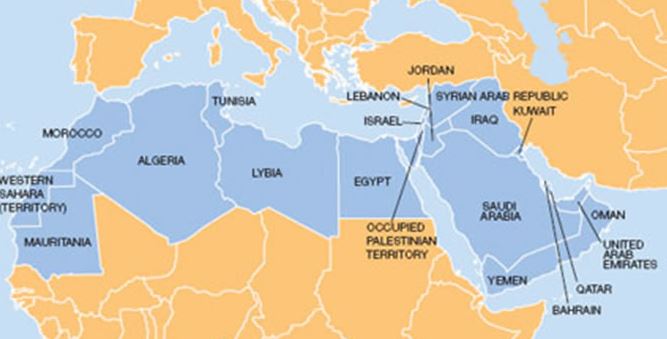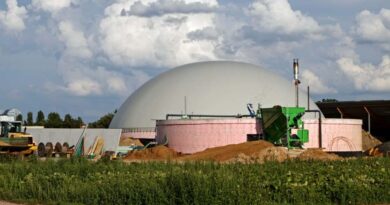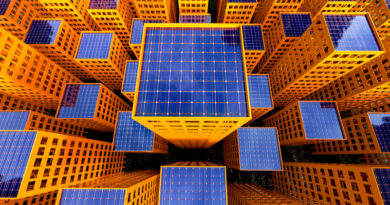Understanding the Middle East’s Push For Renewable Energy
 Solar Power Rising
Solar Power Rising
Back in 2013, when the Mohammed bin Rashid Al Maktoum Solar Park, was launched near Dubai with 13 megawatts of capacity, like in most projects in the region, the ambitions were grand. In 15 years, it was expected to expand to 3,000 MW, with a target to supply the Dubai Electricity and Water Authority (DEWA) with enough power to meet 15 percent of UAE’s demand.
Just six years on, the park is well on its way to reaching its lofty ambitions, especially in terms of total capacity. Like most solar projects worldwide, it has been helped along by the steep drop in cost per kw/h, with the second phase of 200 MW garnering worldwide attention with a US ¢5.89 per kilowatt-hour price. The third phase for 800 MW is also expected to go online soon this year, even as phase 5 for 900 MW created a record of sorts with an incredibly low bid of US 0.169 cents. These low bids have come with promises of high quality, thanks to zero tax and customs duties, no localisation requirements, long term PPA’s, besides concentrated clusters closer to consuming centres to ensure transmission of power is not an issue.
The other major heavy hitter, Saudi Arabia has also doubling up on its renewable plans, with a combination of low bids and smooth policy ensuring a major ramp up in the region. Saudi Arabia is planning to tender over 2 GW this year, and push for 40 GW capacity by as early as 2030. The solar target for 2023 has been raised from 5.9 GW to 20 GW, with the aim for renewables revised up from 9.5 GW to 27.3 GW.
For industry insiders, all the action has been good news, at a time when growth slowed or stalled in key markets, including both China and India. EPC players like Sterling and Wilson have in fact rushed to grab work in these markets, while local developers like ACWA Power have emerged as large global players on the strength of their local market strength. Sterling and Wilson has highlighted its contract for what it terms the largest single location solar power plant of 1,177 MWp in Abu Dhabi regularly to its investors.
So why are these oil powered economies, particularly Saudi Arabia, warming up to solar. According to local experts, the answer is simpler than it seems. Saudi Arabia burns a lot of oil to generate electricity, an inefficient way to generate it, with high pollution too. With high subsidies, it is also one of the top global consumers of oil, despite a population barely above 30 million people. Finally, it seems increasingly clear that the country plans to be the last supplier standing , when it comes to crude oil, as oilfields shut down elsewhere driven by possible demand contraction, but more likely due to lower oil prices. With the world’s lowest cost of extraction, Saudi seeks to extend its own role as a key oil supplier well beyond most other countries that extract it from difficult and costly sources. Be it shale sands, far offshore, or even the shale oil and gas firms . The kingdom is also more reluctant than most to ask its citizens to make lifestyle changes that would consume less energy, while having plenty of both land and sun. hence, the shift to solar.
It is also a no brainer that with their plentiful sand deposits, some of the desert nations are hoping to establish poly silicon production facilities too.
An interesting outcome of the interest in solar has been the opportunities these markets have created for alternative solar technologies, notably CSP (Concentrated Solar Power). Some of the world’s biggest existing and upcoming CSP plants are coming up in the region, and with their added benefit of providing power storage, some of these CSP plants are truly critical to local grids. Total CSP capacity in the region is at over 725 MW now, with more to come. Dubai in fact hopes to manage both its day peaks and evening peaks with PV and dispatchable CSP, , so the mix they are looking for by 2030 is 4GW of PV, 1 GW of CSP and even the 200 MW pumped storage hydro that is being developed in the Hatta region.
Countries not as lucky in the oil sweepstakes, like Egypt, Jordan, Morocco are all moving quickly too. In fact, the MENA region, which includes the Middle East and North Africa, and counts countries as varied as the levant states of Lebanon, Palestine and Israel to the richest in Qatar, has been quoted as one of the key target markets by global majors in China since 2018. It’s a wish that is finally coming true in 2020, with a busy calendar of possible auctions adding upto almost 12 GW across the region between now and 2021. Morocco is aiming for 52 percent renewable energy generation in its energy mix by 2030, Tunisia is aiming at 30 percent and Egypt has set its sights on 20 percent renewable energy by 2022.
So cheap land, plenty of sunshine, energy security (especially to cut dependence on gas from the Dolphin pipeline from Qatar for Dubai and Abu Dhabi) , drop in prices and conserving oil for global sales are some of the key reasons. To that, one can add water conservation in the world’s most water challenged regions, when comparing solar with alternate power production methods, and finally, jobs, where these countries are all looking to see the sector create local jobs. This is particularly important with one of the fastest rising populations in the world across these countries still. In fact, Chinese majors like Longi and Hanergy have already announced plans to establish manufacturing or fabrication centres in Saudi Arabia.
By offering a more generous pricing environment even today, the region has also become a hotbed for testing and launching the latest technologies at scale, as seen by the use of bifacial modules in utility projects, an impossible to foresee situation in a market like India this year. By offering scale as well as better prices, markets like Saudi , Abu Dhabi, Qatar (10 GW target by 2030) and UAE serve as very critical growth drivers for the top end of solar markets. It’s a role that could become even more critical to ensure the market for storage develops, for instance, powered by early adopters in the region for newer and cheaper technologies.
Perhaps the only reason missing in the MENA region’s shift to solar and other renewables is a deeper commitment to mitigating climate change. With the richer countries still to change a culture of high energy wastage, subsidies and worse, one does hope that a change there will follow soon.




